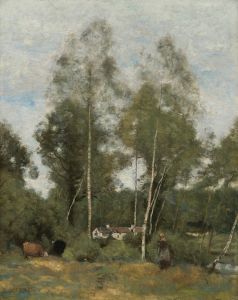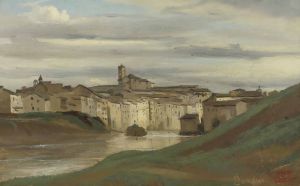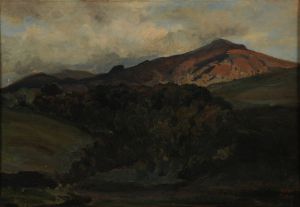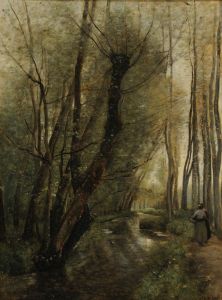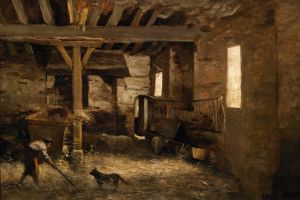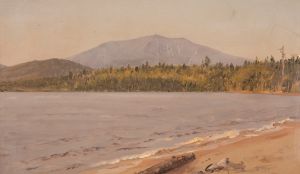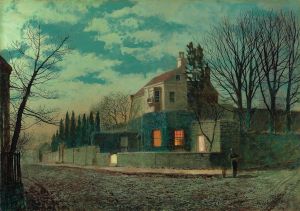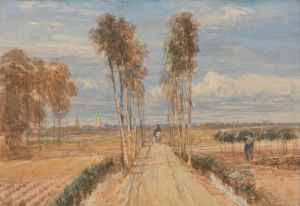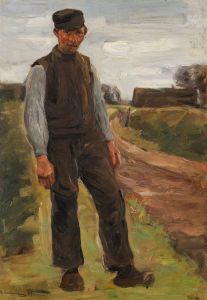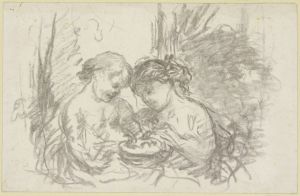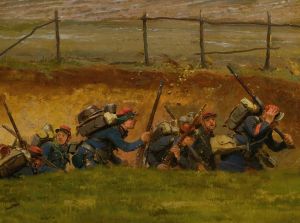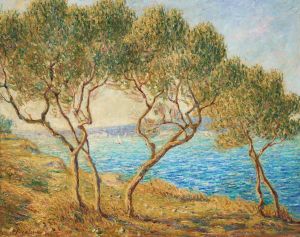
The Forest of Coubron
A hand-painted replica of Jean-Baptiste-Camille Corot’s masterpiece The Forest of Coubron, meticulously crafted by professional artists to capture the true essence of the original. Each piece is created with museum-quality canvas and rare mineral pigments, carefully painted by experienced artists with delicate brushstrokes and rich, layered colors to perfectly recreate the texture of the original artwork. Unlike machine-printed reproductions, this hand-painted version brings the painting to life, infused with the artist’s emotions and skill in every stroke. Whether for personal collection or home decoration, it instantly elevates the artistic atmosphere of any space.
Jean-Baptiste-Camille Corot, a prominent French landscape painter, created "The Forest of Coubron" during the 19th century. Corot is widely recognized for his significant contributions to the Barbizon School and his role in bridging the neoclassical tradition with the emerging Impressionist movement. His works are celebrated for their atmospheric quality and the delicate interplay of light and shadow.
"The Forest of Coubron" exemplifies Corot's mastery in capturing the serene beauty of natural landscapes. Although specific details about the creation date of this painting are not well-documented, it is consistent with Corot's style during the mid-19th century, a period when he frequently depicted forested scenes and rural settings. The painting reflects Corot's deep appreciation for nature and his ability to convey its tranquility and majesty.
In "The Forest of Coubron," Corot employs a soft, muted palette, characteristic of his later works. The composition likely features a dense woodland scene, with tall trees that create a canopy overhead, allowing dappled sunlight to filter through the leaves. This technique creates a sense of depth and invites viewers to immerse themselves in the peaceful ambiance of the forest. Corot's brushwork is typically delicate and fluid, capturing the ephemeral qualities of light and atmosphere.
Corot's approach to landscape painting was innovative for his time. He often painted en plein air, or outdoors, which allowed him to observe and depict the natural world with immediacy and authenticity. This method was relatively novel in the early 19th century and laid the groundwork for the Impressionists, who would later adopt and expand upon this practice.
The Forest of Coubron, like many of Corot's works, reflects his interest in the interplay between reality and idealization. While his landscapes are rooted in real locations, they often possess a dreamlike quality, blurring the line between the tangible and the imagined. This duality is a hallmark of Corot's style and contributes to the enduring appeal of his paintings.
Corot's influence extends beyond his own body of work. He was a mentor to several younger artists, including members of the Impressionist movement such as Camille Pissarro and Berthe Morisot. His emphasis on capturing the transient effects of light and atmosphere resonated with these artists and helped shape the development of modern art.
Today, "The Forest of Coubron" is appreciated not only for its aesthetic qualities but also for its historical significance. It represents a pivotal moment in the evolution of landscape painting and highlights Corot's role as a transitional figure between classical and modern art. His ability to convey the subtle beauty of nature continues to inspire artists and art enthusiasts alike.
While specific exhibitions or collections housing "The Forest of Coubron" are not detailed in available records, Corot's works are widely held in major museums and galleries around the world. His paintings remain a testament to his skill and vision, offering viewers a glimpse into the serene and contemplative world he so masterfully depicted.





